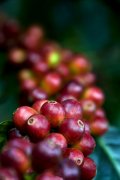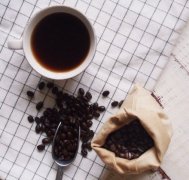Drink coffee scientifically and grasp the best time to drink coffee
As a representative of fashion and delicacy, coffee has been favored by countless beauties. However, drinking coffee without paying attention to time will cause harm to the body of coffee beauties.

Coffee contains caffeine, which excites the sympathetic nerves after entering the body, thus eliminating drowsiness, improving blood circulation, and the body also feels warm and does not feel tired, so it has a "refreshing" effect.
However, when the sympathetic nerve is stimulated and excited, it has a negative effect on appetite, that is, appetite will be reduced, so drinking coffee before a meal will not want to eat. In addition, due to the stimulation of the stomach and the increase of gastric juice secretion, stimulating the empty stomach is disadvantageous to patients such as gastric ulcers. This can be said to be the negative effect of coffee. But drinking after a meal is helpful to digestion because the secretion of gastric juice will increase. Therefore, there is absolutely no problem with drinking after a meal.
In addition, some people think that adding a little milk to drink can ease its irritating effect, but how much of a small amount of milk can neutralize caffeine, unless half milk and half coffee, mixed with coffee milk or milk coffee, may have some effect. For example, coffee and milk for breakfast, because there is more milk than coffee, although it is drunk on an empty stomach, it still has the effect of relieving gastric juice.
Ideally, drink after a meal, which is beneficial and harmless. One of the benefits is to prevent the onset of allergies. As a result of allergic parasympathetic nerve excitation caused by asthma or allergic rhinitis, if it can promote sympathetic nerve excitement, inhibit parasympathetic nerve, it will help to prevent the attack. Especially serious allergic patients, some mild incentives can cause physical discomfort, coupled with psychological fear of allergies, often out of control. Therefore, it is recommended to make use of the advantages of caffeine to drink a cup of coffee in advance when allergies and asthma are about to occur (the patient feels it), which is quite preventive. In addition to the excitatory effects of caffeine, patients who have "already had coffee" on sense of security are less likely to attack.
Important Notice :
前街咖啡 FrontStreet Coffee has moved to new addredd:
FrontStreet Coffee Address: 315,Donghua East Road,GuangZhou
Tel:020 38364473
- Prev

These foods should never be eaten with coffee
Tea, coffee and cocoa are called the three major drinks in the world. Coffee tree is a small evergreen tree of Rubiaceae. Coffee for daily consumption is made from coffee beans combined with various cooking utensils, and coffee beans refer to the nuts in the fruit of coffee trees, which are then roasted by appropriate roasting methods. There are other books with this name. After getting up in the morning, drink a cup of coffee to wake up and work during the day
- Next

A cup of coffee affects six systems of the human body.
Nowadays, many modern people like to drink coffee and caffeinated energy drinks to refresh themselves. But many people don't know that caffeine affects six parts of the body. 1. Heart caffeine acts on the heart in two ways: in addition to affecting the brain center that regulates the cardiovascular system, it also acts directly on the heart. High doses of caffeine can increase caffeine intolerance every minute.
Related
- Beginners will see the "Coffee pull flower" guide!
- What is the difference between ice blog purified milk and ordinary milk coffee?
- Why is the Philippines the largest producer of crops in Liberia?
- For coffee extraction, should the fine powder be retained?
- How does extracted espresso fill pressed powder? How much strength does it take to press the powder?
- How to make jasmine cold extract coffee? Is the jasmine + latte good?
- Will this little toy really make the coffee taste better? How does Lily Drip affect coffee extraction?
- Will the action of slapping the filter cup also affect coffee extraction?
- What's the difference between powder-to-water ratio and powder-to-liquid ratio?
- What is the Ethiopian local species? What does it have to do with Heirloom native species?

